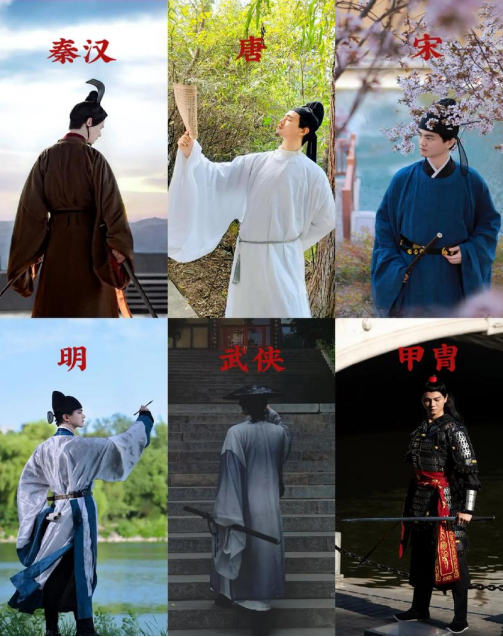As the cause of cultural revival thrives, Hanfu, a traditional Chinese clothing system, is favored by many fashion enthusiasts and cultural communicators. They choose Hanfu for daily outings or specific occasions, promoting Hanfu culture through their actions. The Hanfu system is vast, and wearing Hanfu requires considering the right time and place. So, seasonal changes matter for Hanfu outfits. How to wear Hanfu in different seasons to bring out its aesthetic value? This article will give you a detailed guide.

Choosing Hanfu for the Four Seasons
The beauty of Hanfu lies in the ancient wisdom of adapting to the seasons. Different seasons have typical styles and material choices.

In spring, when it’s still chilly, a thick Beizi (a type of overgarment) or Banbi (half-sleeve jacket) can keep your shoulders and neck warm. Pair it with a comfortable cross-collar Ruqun . Choose crisp cotton-linen or fine silk. This keeps the basic Hanfu style while suiting spring’s mild weather.

In hot summer, staying cool is key. Wear loose styles like light Qixiong Shanqun , Zhiju , or Zhuzi Shenyi. Pick breathable materials: thin silk, Shaluo, or high-quality cotton-linen. This lets you enjoy Hanfu while beating the heat.

Autumn Hanfu focuses on layering. Ming-style stand-collar slant-front long Ao (袄), Song-style Baidiequn , and Tang-style round-collar robes work best in autumn’s mild weather. They’re versatile for changing temperatures. If it gets cold, add a warm woolen or thick cotton-linen Bijia or lined Beizi.

In cold winter, warm Hanfu is a must. Ming-style long Ao with thick Mamianqun , fleece-lined Daopao, or woolen capes keep you warm. Choose materials like woolen fabric, thick brocade, or silk-cotton filling. Follow the ancient “layered clothing” tradition, balancing elegance and warmth.

What to Note for Seasonal Hanfu Wearing
Seasonal Hanfu outfits aren’t rigid. When it comes to Hanfu styling, emphasis is placed on proper layering without excess and accessories that serve as the finishing touch. color-material coordination, and modern elements.Layering should have a sense of hierarchy, not be too plain. Mix different parts wisely. For example, thin shirts with Beizi in spring and autumn; long Ao with waistcoats in winter.Accessories should match the Hanfu, enhancing the overall look to maximize its beauty.

Colors and materials should change with seasons and occasions. Don’t stick to a fixed pattern. Keep Hanfu’s basic style but add your own touch.Add modern elements: different embroidered patterns, thermal pants or leggings underneath, or breathable linings.
Hanfu outfits vary by person. Choose styles that match your own style. Don’t wear it just for the sake of wearing it and lose its essence. Consider occasions and needs. Stay comfortable and confident—that’s the true love for Hanfu.







